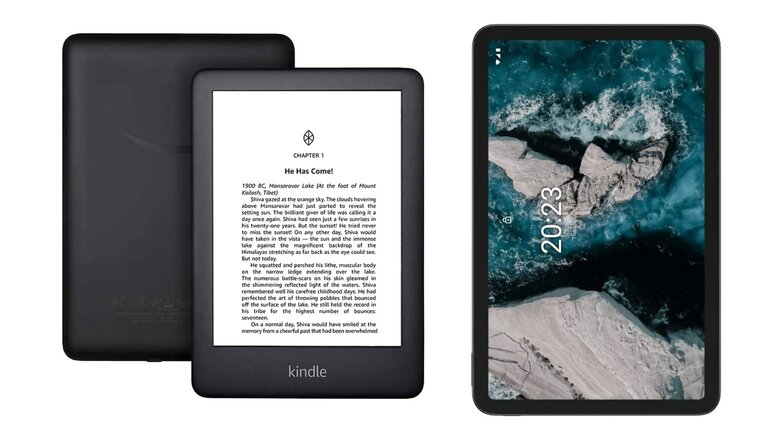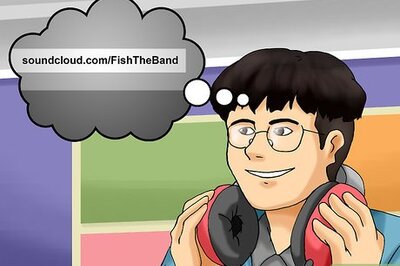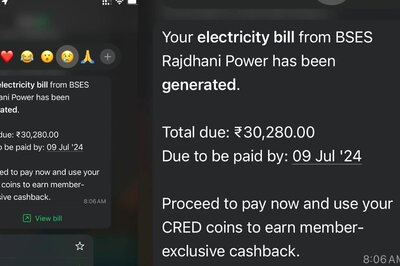
views
Amazon Kindle e-reader and regular Android tablets look very alike, but the two are vastly different in terms of functionalities. The Amazon Kindle is essentially a tablet; however, it is designed to improve reading habits. Android tablets or Apple iPads, on the other hand, can improve reading habits as users are getting a large portable screen, making the viewing experience more immersive. Regular Android tablets are also capable of handling other tasks like gaming, taking photos or videos, and more. However, Amazon Kindles are slowly becoming expensive, and their premium model – the Kindle Oracle, costs over Rs 20,000. Many OEMs are offering affordable tablets under Rs 20,000 in India.
If you’re on a tight budget and planning to upgrade daily with a tablet, here’s what you need to know about what Amazon Kindle and regular Android tablets offer.
Amazon Kindle vs Regular Android Tablets: Cost
Cost is easily a big factor while making the purchase decision. Amazon Kindle e-readers are becoming more expensive, and their most reliable entry-level Kindle (10th-Gen) with a 6-inch display costs Rs 7,199. The Kindle Paperwhite (10th gen) carries an MRP of Rs 12,999, but the price fluctuates during the Amazon sale. Similarly, there’s an upgraded Kindle Paperwhite Signature Edition that costs Rs 17,999. The premium Kindle Oasis with a 7-inch display and slimmer bezels costs Rs 21,999.
Regular Android tablets are around the same range but we get lots of options to choose from. Some of the well-reviewed budget Android tablets include Realme Pad (Rs 17,999, 4GB RAM + 64GB storage), Nokia T20 (Rs 16,499, 64GB storage), Motorola G70 (Rs 22,999, 64GB storage), and Samsung Galaxy Tab A8 (Rs 21,999, 3GB RAM + 32GB storage).
Amazon Kindle E-reader: Pros and Cons
All Amazon Kindles are essentially designed to improve users’ reading habits by offering limited features. The most obvious element is the display which is significantly different from what we get on regular tablets. Amazon Kindle is an e-book reader, and the company offers a non-glare, small screen to let users hold the device for long hours without getting tired.
The screen also lacks colours, and the regular black and white display with a paper-like impression makes it feel like a paperback book. Even the colour of the book covers are in black and white.
The top-tier Kindles like Signature Edition and Oasis offer more brightness and other display features like auto-dimming, warm tone customisation, and more to make reading more pleasurable. However, first-time buyers won’t notice much of a difference as Kindles are very different from regular tablets.
Amazon Kindle also won’t allow users to download third-party apps, and there’s no notification system to distract users. Except for the 10th-gen Kindle, the newer models feature a USB-C port for charging. Do remember the maximum screen size Kindle offers is 7 inches. Tablets, on the other hand, have 10-inch screens (generally).
Another big advantage of Amazon Kindle is that battery life is superb, and the tablets can run for weeks.
Regular Android tablets: Pros and Cons
A simple word that explains tablets is ‘customisation’. Amazon Kindles come with limited functionalities, and regular Android tablets offer much more. It is mainly due to a relatively more powerful processor and dedicated Android OS. It means users can use it like a smartphone minus the calling feature.
Regular Android tablets can also improve reading, but there’s a caveat. Constant notifications may distract you, and the bright, glossy display may cause some kind of fatigue after hours. But a brighter and more vivid display could be a blessing for watching movies. Similarly, budget tablets are also kids-friendly as many smartphone apps are not fully optimised for the device. They can be used for online classroom work as well.
Ironically, the major con of a regular tablet would be the size only. No matter where or how you hold it, the tablets become uncomfortable in your palms after long usage.
Sony WF-C500 Review: Mid-Budget TWS Earbuds That Won’t Disappoint
Most Android tablets also include a camera (not available on Kindle) so using them for video calls is convenient. Lastly, Android regular tablets’ battery backup is also good if not better, but many budget tablets support slow 10W charging. For instance, the Nokia T20, which we reviewed recently, takes roughly five hours to charge.
Read all the Latest Tech News and Breaking News here



















Comments
0 comment